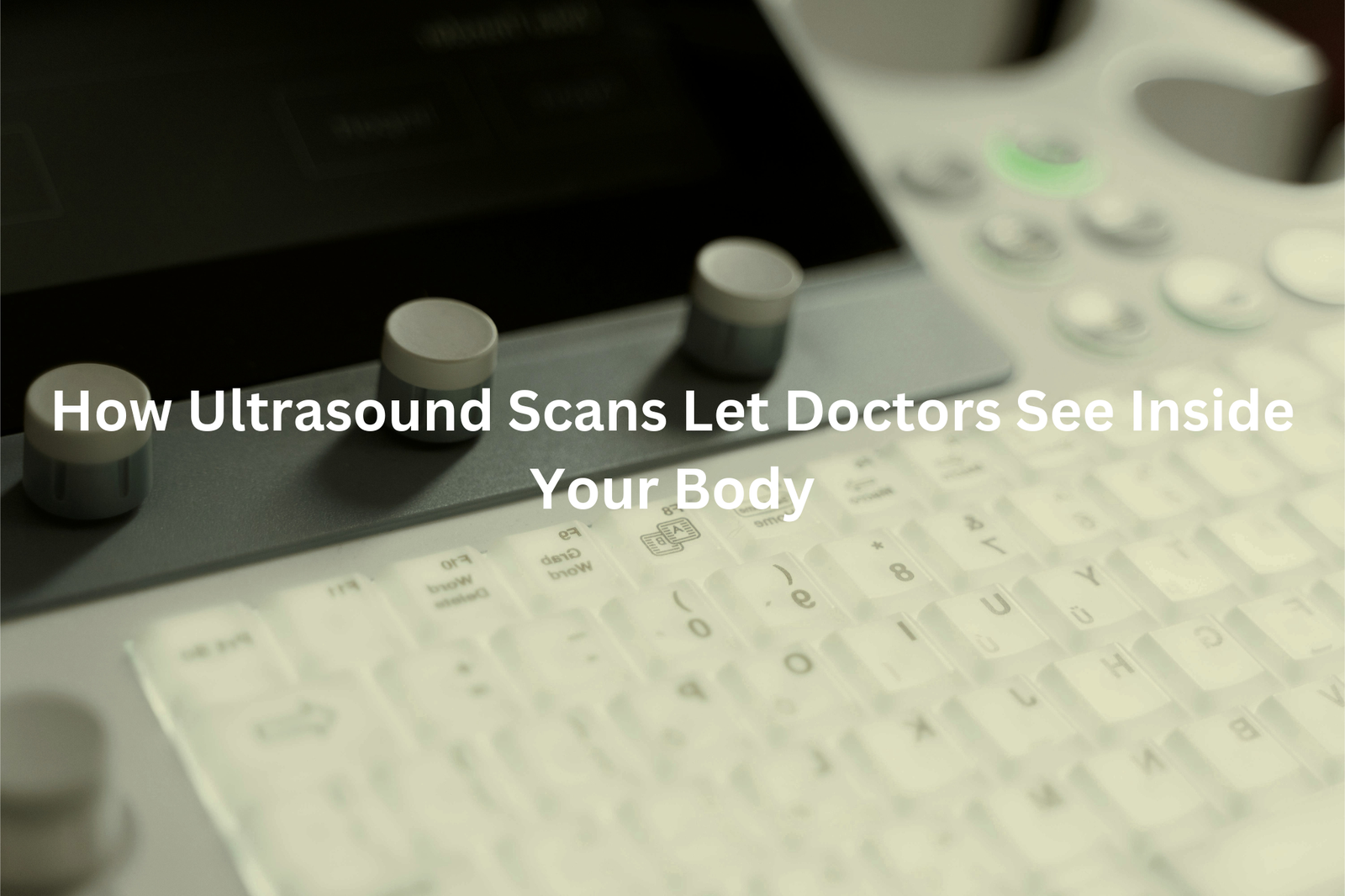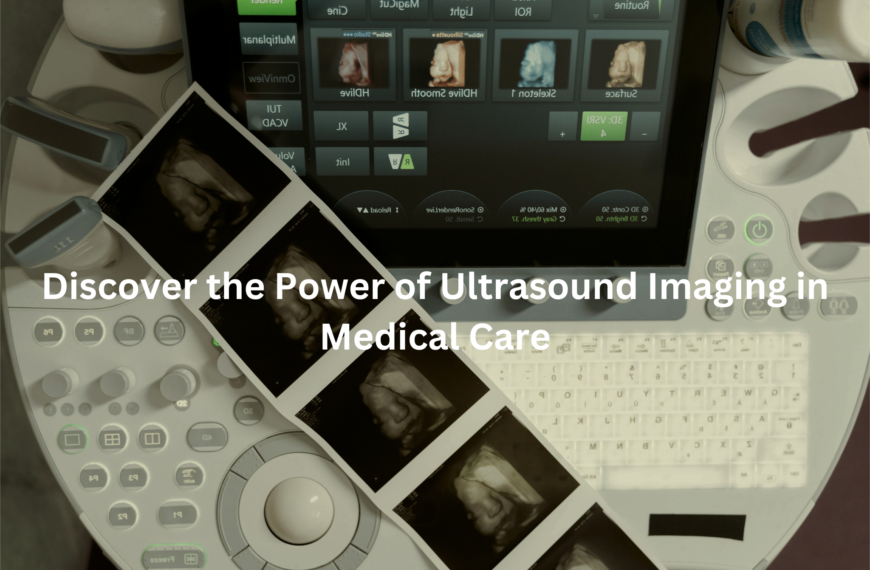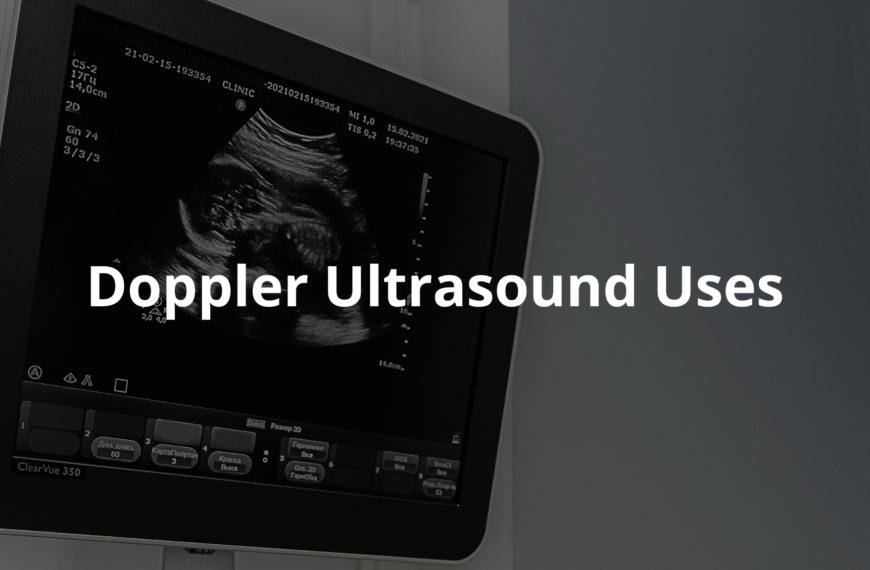Ever wondered how ultrasound scans work? They use sound waves to look inside the body and check on babies, organs, and more. Let’s explore this fascinating process!
Ultrasound scans use sound waves to create images of the body’s organs, helping doctors check on unborn babies, hearts, kidneys, and more. They’re safe, painless, and radiation-free, making them a common tool in medical care.
During pregnancy, scans track a baby’s growth and development, while in other cases, they help detect issues like gallstones or blood flow problems. Quick, non-invasive, and widely used—ultrasound technology makes internal imaging easier than ever.
Key Takeaway
- Ultrasound scans use sound waves to create images of inside the body.
- They help doctors see unborn babies and check for different health issues.
- Preparing for an ultrasound might mean drinking water or fasting.
What is an Ultrasound Scan?
Ultrasound is a clever bit of technology. It uses high-frequency sound waves (20,000 Hz or more) to create images of what’s inside the body—no radiation, no cuts, just real-time visuals.
Why it’s brilliant:
- Shows internal organs without surgery
- Zero radiation (unlike X-rays)
- Captures movement in real-time
- Completely painless (just a bit of cold gel)
A trained sonographer moves a small probe over the skin, sending sound waves that bounce back to form an image. The liver appears as a dark grey mass, while blood vessels look like thin black tunnels. Pregnancy scans are especially fascinating—tiny hands waving, a flickering heartbeat, sometimes even a baby sucking their thumb at 20 weeks.
Ultrasound is also used for diagnosing kidney stones, gallbladder issues, and heart conditions. Results are often instant, with doctors reviewing scans in minutes. No waiting, no stress—just a quick look inside.
How Ultrasound Works
Ultrasound works like sonar, but instead of scanning the ocean, it maps out what’s inside the human body. High-frequency sound waves (above 20,000 Hz) bounce off tissues and organs, creating real-time images—no radiation, no surgery, just a quick look inside.
Here’s how it works (1):
- A transducer sends sound waves into the body
- The waves bounce off organs and tissues
- A computer translates echoes into pictures
A layer of gel (water-based, non-toxic) is spread over the skin to help the sound waves travel smoothly. Without it, the air between the probe and skin would block the signal.
Organs show up in shades of grey—kidneys about 10–12 cm long, blood vessels as dark hollow tubes. The scan itself takes about 30 minutes, and results are usually reviewed on the spot. It’s one of the easiest ways to check for pregnancy, gallstones, or heart issues without invasive procedures.
Common Uses of Ultrasound Scans
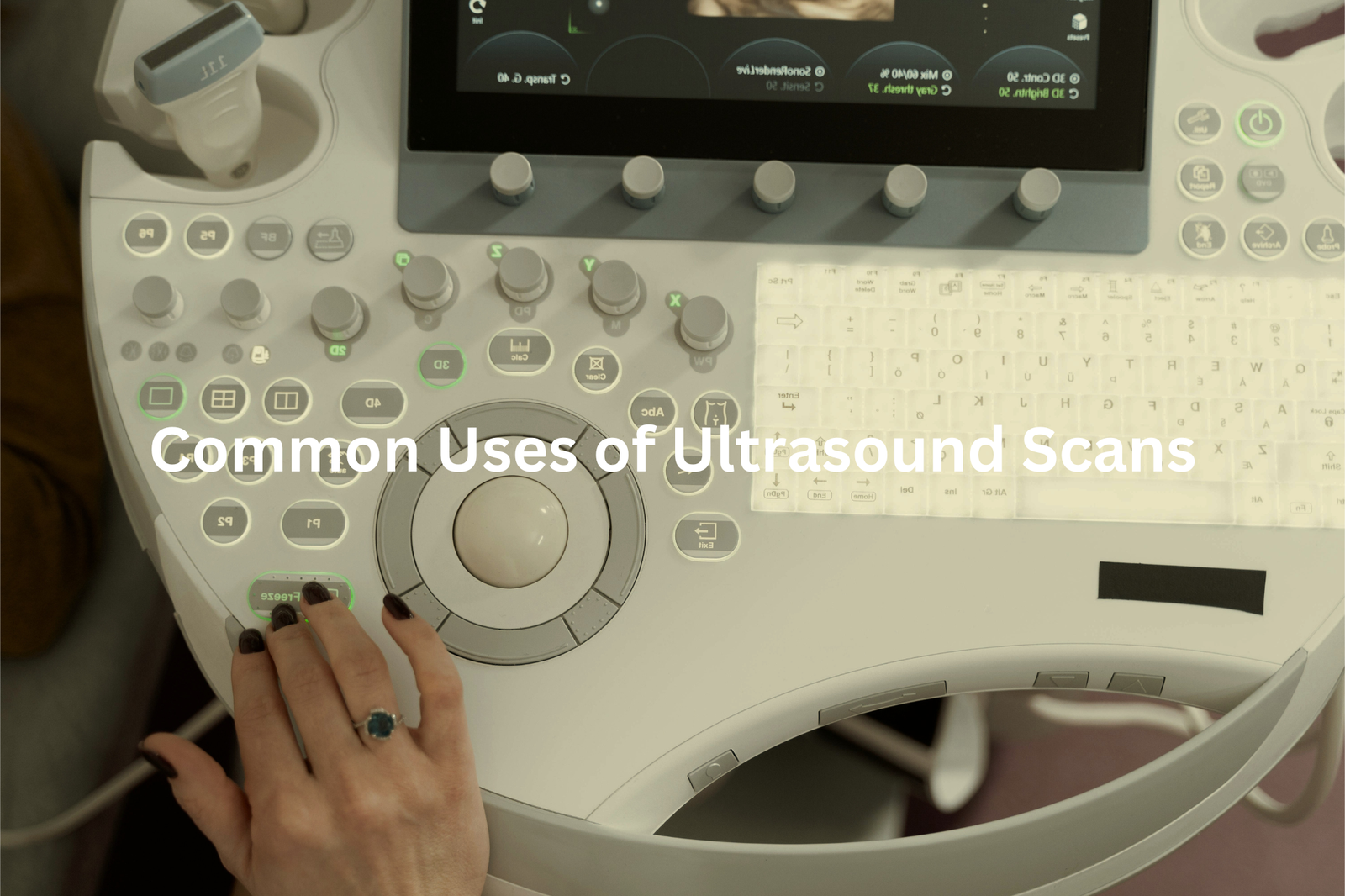
I watched the ultrasound machine hum to life in Dr. Chen’s office last week, its screen casting a The blue glow of the ultrasound machine lights up the room. It’s amazing how something the size of a mini-fridge can peek inside the body using just sound waves (operating at frequencies between 2-18 MHz). It’s like science fiction, but real.
Ultrasounds aren’t just for seeing babies, though that’s what most people think. They’re actually great for spotting kidney stones (about 1-2 cm in size), lumps, and even checking blood flow. The process is simple:
- A transducer (the wand thing) sends sound waves into the body
- These waves bounce off organs and tissues
- The computer turns the echoes into images
Once the cold gel is spread over the skin, it helps the sound waves travel better (without it, they’d be blocked by the air). The images on the screen aren’t always crystal clear at first, but they usually show up pretty well after a few seconds.
What can an ultrasound check?
- Growing babies, usually around 10 cm long at 12 weeks
- Painful kidney or gallstones
- Swollen organs or lumps
- Blood flow in veins and arteries
Ultrasounds are quick, painless, and a great tool to get a better look inside without any cuts or radiation. If you’ve got one coming up, don’t sweat it—it’s easier than you think.
Types of Ultrasound Scans
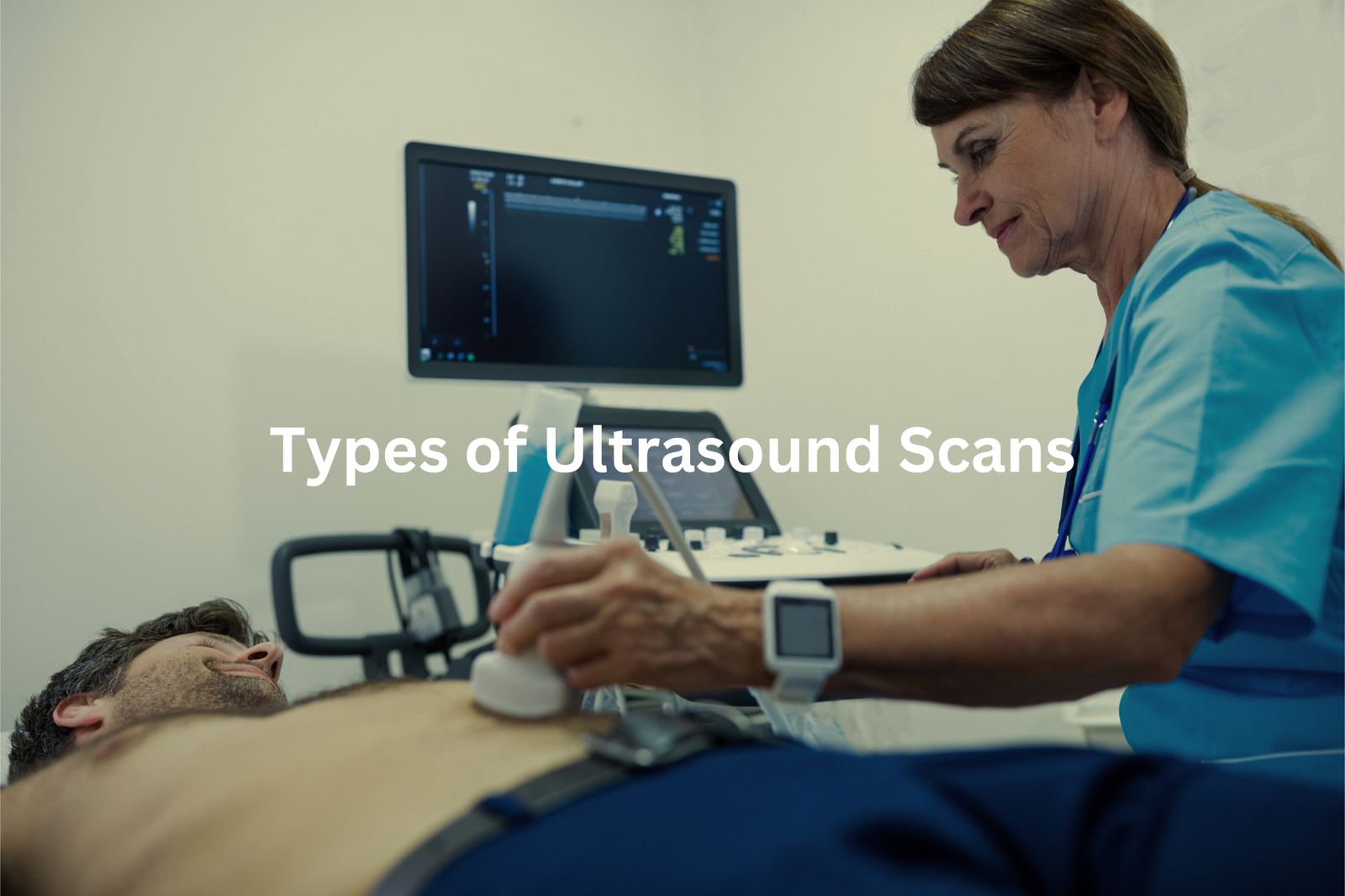
Ultrasound scans feel like a peek into another world—no radiation, just sound waves doing all the work. It’s like having x-ray vision, but without the worry.
There are a few different types of ultrasound scans, each one checking something important:
- Belly (Abdominal) Scans: These look at organs like the liver and kidneys, usually around 10-12 cm long. For example, at Royal Prince Alfred Hospital, one scan showed everything perfectly in 30 minutes.
- Lady Parts (Pelvic) Scans: These check women’s reproductive organs to catch any unusual changes. Done at specialist clinics, these scans are pretty straightforward.
- Blood Flow (Doppler) Scans: These show the flow of blood through veins and arteries. It’s like watching a river’s current from above—helpful for spotting blockages.
- Heart (Echocardiogram) Scans: This type shows the heart beating, in real-time! Watching those chambers pulse away is something else.
Before the scan, a bit of prep might be needed. Some scans require a full bladder or an empty stomach. Wear comfy clothes, though, and get ready for a quick procedure. The whole thing’s easy, really—it’s just like getting a photo taken, except it’s a picture from the inside.
Safety and Side Effects
Ultrasound scans are way less intimidating than most people think. It’s like using a special camera that looks inside the body, only it works with sound waves—about 20,000 vibrations per second. No radiation, no pain. Just sound. (2)
Here’s how it works (it’s pretty simple):
- First, the sonographer slathers some gel on your skin. It’s cold but harmless.
- Then, they move a small device called a transducer around. This gizmo sends out sound waves that bounce back from your insides.
- Next, the sound waves turn into images. You might feel a little pressure, but no pain at all.
- Finally, you’re done. Most people don’t even notice the time pass.
It’s like getting a photo taken, but the camera’s looking inside. Some scans, like the ones for pregnant women, can show babies kicking around. Others check organs or blood flow. Either way, it’s all quick and safe.
Oh, and here’s a pro tip: If you’re getting one, wear comfy clothes. Some scans ask for a full bladder, or to skip a meal, so follow the instructions carefully. Don’t forget to mention if you’re allergic to the gel! Most people find the whole thing pretty relaxing, and some even fall asleep.
Preparing for an Ultrasound Scan
Sitting in that waiting room at Royal Prince Alfred Hospital in Sydney, the nerves start to settle. Ultrasounds aren’t as intimidating as they seem. Still, there’s some prep involved, especially for different types of scans.
For belly scans (abdominal ultrasounds), it’s pretty simple: skip brekkie and maybe even your morning coffee. About 4-6 hours without food or drink should do it. Your doctor needs your tummy clear to see everything properly.
Now, pelvic scans, they’re a bit trickier. You’ll need to drink a litre of water (roughly 4 cups) and hold it in. It’s uncomfortable, no doubt, but the scan itself usually only takes 30 minutes or so.
Here’s a quick tip for anyone heading in for a scan: wear comfy clothes. And it’s always smart to double-check with your GP about the exact prep. Every scan’s a little different, and each patient’s needs are unique.
The process itself is simple, but the preparation’s important. I think most people find the whole experience less stressful once they know what to expect. Just remember, no surprises – just good planning.
Duration and Experience
Ultrasound scans aren’t as scary as they might seem. At first, they sound a bit daunting, but really, it’s just like getting a photo taken, except it’s from the inside. It’s quick, simple, and relatively comfortable. (3)
The process usually takes around 20 to 40 minutes. You’ll lie back on a padded bed while the sonographer (that’s what ultrasound specialists are called in Australia) moves a small wand-like device, called a transducer, over your body. They’ll spread some cold gel on your skin first, which is just part of the deal. The gel’s cold, but it doesn’t last long. The device sends sound waves through your body, bouncing back to create images.
What to expect:
- Wear comfy clothes
- Stay as still as possible during the scan
- The gel might feel chilly, but it’s all part of the process
- You’ll hear some soft buzzing noises as the device moves
Once it’s all done, you’re free to head back to your day—no recovery needed. The scan’s easy, and most people find it surprisingly relaxing. Just make sure to check with your doctor beforehand if you’ve got any concerns.
FAQ
What is a CT scan and how does it differ from an ultrasound?
A CT (computed tomography) scan uses x-rays to create detailed images of the body, while an ultrasound uses high-frequency sound waves. CT scans are better for seeing bone and internal organs, while ultrasounds excel at visualising soft tissues, the unborn baby, and blood flow.
What is a road CNR and how can it affect my ultrasound appointment?
A road CNR (road condition report) can provide important information about potential traffic delays or road closures that may impact your ability to reach the ultrasound clinic on time. Checking the road conditions before your appointment can help ensure you arrive without any unexpected delays.
Can I get my ultrasound scan bulk billed?
In some cases, ultrasound scans can be bulk billed, meaning the clinic will directly bill Medicare and you won’t have any out-of-pocket costs. This is more common for routine scans, but the availability can vary depending on your location and the specific ultrasound clinic.
When would I need a high-risk ultrasound?
High-risk ultrasounds are usually recommended for pregnancies with potential complications, such as older maternal age, pre-existing medical conditions, or fetal abnormalities detected during earlier scans. These specialised scans provide a closer look at the baby’s development and can help monitor for any issues.
Can I use a hand-held ultrasound device at home?
While portable ultrasound devices are becoming more available, it’s generally not a good idea to try and perform your own ultrasound at home. These devices require specialised training to use properly and interpret the results accurately. It’s best to have your scans done by a highly trained medical professional.
Is it a good idea to schedule my ultrasound on a Friday or Saturday?
Many ultrasound clinics offer extended hours on Fridays and Saturdays to accommodate patients’ schedules. This can be a good option if you have difficulty taking time off work during the week. Just be sure to book your appointment in advance, as these timeslots tend to fill up quickly.
What should I expect at an ultrasound clinic on the Gold Coast?
Ultrasound clinics on the Gold Coast generally provide a comfortable, professional environment with highly trained staff. They’ll walk you through the process, answer any questions, and ensure you have a positive experience. Many clinics also offer on-site parking and easy access from major roads.
How can I check the blood flow during my ultrasound?
A specialised ultrasound called a perfusion scan can assess the blood flow to various organs and tissues in the body. This type of scan is particularly useful for evaluating conditions like blockages or abnormal blood vessel development. Your doctor can determine if a perfusion scan would be beneficial.
Where is the Logan Road ultrasound clinic located?
The Logan Road ultrasound clinic is situated in the suburb of Bowen Hills, which is just a short drive from the central business district of Brisbane. The clinic is conveniently located on the ground floor with easy access and ample parking available.
Can I book an ultrasound on a Friday or Saturday at 8am?
Many ultrasound clinics offer early morning appointments on Fridays and Saturdays to accommodate busy schedules. Be sure to check the opening hours of your local clinic, as they may have specific weekend and holiday hours that differ from their regular weekday schedule.
What’s the difference between a dating scan and an early anatomy scan?
A dating scan is typically performed in early pregnancy to confirm the due date and assess the baby’s growth. An early anatomy scan, on the other hand, takes a more in-depth look at the baby’s developing organs and structures during the first trimester. Both scans provide valuable information, but serve slightly different purposes.
Do I need to get any blood tests before my ultrasound?
Depending on the type of ultrasound you’re having, your doctor may request that you get some preliminary blood tests done. For example, a pelvic ultrasound or antenatal scans may require bloodwork to check things like your hormone levels or screen for potential issues. Be sure to follow any pre-scan instructions from your healthcare provider.
What healthcare services are available at the St Vincent’s medical centre?
St Vincent’s medical centre offers a wide range of health services, including ultrasound imaging. In addition to general ultrasounds, they have specialists who can perform more advanced scans like 4D ultrasounds and those focused on the female pelvis. The centre’s team will be happy to assist you in scheduling an appointment.
Can I park at the Queen Street ultrasound clinic?
The Queen Street ultrasound clinic in Spring Hill has a dedicated car park on the ground floor of the building, making it easy for patients to access the facility. Be sure to allow enough time to find a spot, especially if you’re visiting during peak hours.
How much amniotic fluid should I drink before my ultrasound?
For most ultrasounds, you’ll be asked to drink a small amount of water, typically around one hour before your appointment. This helps ensure your bladder is full, which can improve the quality of the images. Your technician will provide specific instructions based on the type of scan you’re having.
Who should I bring with me to my ultrasound appointment?
Many people choose to have a support person, like a partner or family member, accompany them to their ultrasound. This can be especially helpful for first-time parents or those feeling anxious about the process. Just be sure to check with the clinic about any visitor policies or capacity limits.
What is the address of the Leichhardt Court ultrasound clinic?
The Leichhardt Court ultrasound clinic is located at 123 Street Ipswich, in the heart of the South Brisbane neighbourhood. This conveniently situated facility is easily accessible by public transportation and has ample on-site parking available for patients.
When would I need an invasive prenatal test like amniocentesis?
Invasive prenatal tests like amniocentesis are sometimes recommended for women at higher risk of genetic or chromosomal abnormalities. These tests involve taking a small sample of amniotic fluid or placental tissue and carry a slight risk of complications. Your doctor will discuss if an invasive test is warranted based on your individual circumstances.
How can genetic screening tests help during my pregnancy?
Genetic screening tests, such as cell-free DNA or chorionic villus sampling, can provide important information about the health and development of the fetus. These tests can detect chromosomal conditions like Down syndrome and help identify any potential issues early on. Your healthcare provider can explain which screening tests may be appropriate for you.
Conclusion
Ultrasound scans are a great way to see inside our bodies without any invasive procedures. They’re used by doctors to monitor unborn babies and check for various health issues. Knowing how these scans work helps you feel more at ease if you need one.
If you ever have questions about ultrasounds, it’s smart to ask your doctor. They’re always there to support you! Next time I hear about ultrasounds, I’ll remember their amazing benefits—what about you?
References
- https://www.betterhealth.vic.gov.au/health/conditionsandtreatments/ultrasound-scan
- http://cvs.net.au/patients/faq/item/ultrasound-faq
- https://i-med.com.au/procedures/ultrasound

